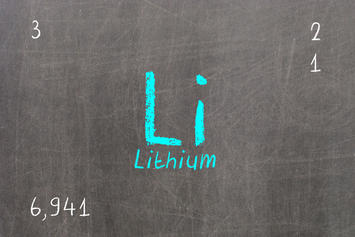
When you consider the push for electrical vehicles (EVs) to replace gas and diesel combustion transports on our roadways, the carbon footprint valuation appears quite attractive. The batteries that power those EV’s are however dependent on exotic minerals to function which exposes the dark side of green technology.
The mere extraction of the exotic minerals cobalt and lithium used in the batteries of EV’s present social challenges, human rights abuse challenges, and environmental challenges. Hazardous working conditions where the workers make such meager wages they live in abject poverty. Moreover, they are regularly exposed to out of control pollution and countless other environmental issues which cannot be ignored.
The key minerals used in today’s batteries are cobalt of which 60% is sourced from one country, the Democratic Republic of the Congo (DRC), and lithium of which more than 50% is sourced from the Lithium Triangle in South America, which covers parts of Argentina, Bolivia and Chile. Today 20% of cobalt is mined by hand. Amnesty International has documented children and adults mining cobalt in narrow man-made tunnels, at risk of fatal accidents and serious lung disease.
The cobalt mined by children and adults in horrendous conditions in the DRC in Africa is entering the supply chains of some of the world’s biggest brands. The richest most powerful companies in the world are still making excuses for not investigating their supply chains. Even those that are investigating are failing to disclose the human rights risks and abuses they find.
As demand for rechargeable batteries grows, companies have a responsibility to prove that they have ethical supply chains, a priority when implementing green policies, and are not profiting from the misery of miners working in terrible conditions like those in the DRC. The energy solutions of the future must not be built on human rights abuses.
When a company has contributed to, or benefited from, child labor or adults working in hazardous conditions, it has a responsibility to remediate the harm suffered. This means working with other companies and the government to remove children from the worst forms of child labor and support their reintegration into school, as well as addressing health and psychological needs.
One of today’s biggest environmental problems caused by our endless hunger for the latest “smart” devices that are made from the chemicals manufactured out of deep earth minerals/fuels, is a growing mineral crisis, particularly the minerals needed to make the batteries that power these devices.
There are additional environmental concerns related to those rare earth metals. In recent years, rare earth metals like lithium have been imported in greater quantities from China, which has been able to lower its prices enough to now monopolize the industry. One of the reasons China could sell lithium so cheaply is because it widely ignores environmental safeguards during the mining process.
In the Bayan Obo region of China, for example, miners remove topsoil and extract the gold-flecked metals using acids that enter the groundwater, destroying nearby agricultural land. Even the normally tight-lipped Chinese government has admitted to rare earth mining abuses in some provinces.
Battery production causes more environmental damage than carbon emissions alone. Consider dust, fumes, wastewater and other environmental impacts from cobalt mining in the DRC; and toxic spills from lithium mining in South America, which can alter ecosystems and hurt local communities; a heavily polluted river due to nickel mining in Russia; or air pollution in northeastern China.
Most electric vehicles in use today are yet to reach the end of their cycle. The first all-electric car to be powered by lithium-ion batteries, the Tesla Roadster, made its market debut in 2008. This means the first generation of electric vehicle batteries have yet to reach the recycling stage. An estimated 11 million tons of spent lithium-ion batteries will flood our markets by 2025, without systems in place to handle them.
Energy is more than just electricity from cobalt and lithium minerals used in batteries. Electricity alone, especially intermittent electricity from renewables, has not, and will not, run the economies in the world, as electricity alone is unable to support the energy demands of the military, airlines, cruise ships, supertankers, container shipping, medications, vaccines, and trucking infrastructures.
The intermittent electricity from wind, solar, or batteries CANNOT supply the thousands of products from petroleum that are demanded by every transportation infrastructure, electricity generation, medications, cooling, heating, manufacturing, agriculture, and virtually all the products that are the basis of everyone’s standard of living across the globe.
As the world scrambles for more clean electrical energy, the environmental impact of locating and extracting all the lithium and/or cobalt required to enable and sustain the transformation could become a serious issue in its own right. The electrical energy solutions of the future must not be built on human rights abuses or on non-existent environmental regulations.
This piece originally appeared on CFACT.
Ronald Stein is the Founder and Ambassador for Energy & Infrastructure at PTS Advance headquartered in Irvine, California and a researcher and commentator on climate, energy, environment and public policy.












